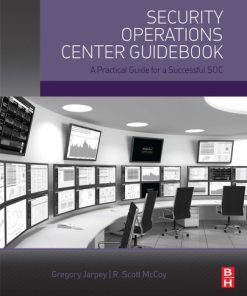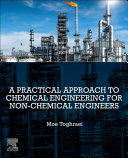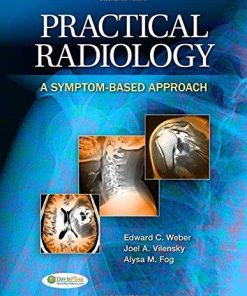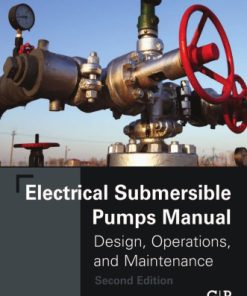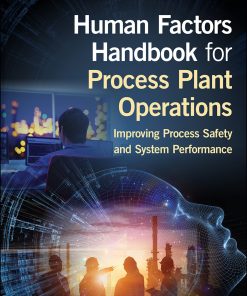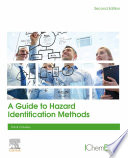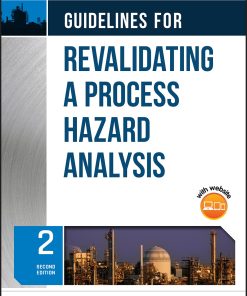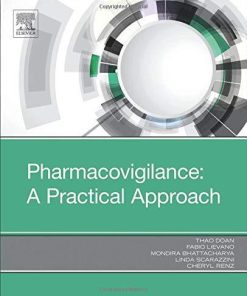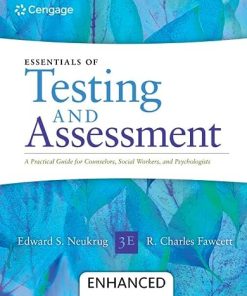(EBOOK PDF)A Practical Approach to Hazard Identification for Operations and Maintenance Workers 1st Edition by CCPS 9780470635247 047063524X full chapters
$50.00 Original price was: $50.00.$25.00Current price is: $25.00.
A Practical Approach to Hazard Identification for Operations and Maintenance Workers 1st Edition by CCPS – Ebook PDF Instant Download/Delivery: 9780470635247, 047063524X
Full download A Practical Approach to Hazard Identification for Operations and Maintenance Workers 1st Edition after payment
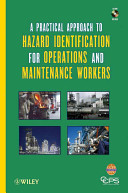
Product details:
• ISBN 10:047063524X
• ISBN 13:9780470635247
• Author:CCPS
The first part of this book (Chapters 1 and 2) provides an introduction and discusses basic concepts.
Chapter 3 deals with the use of the basic human senses for identifying hazards.
Chapter 4 deals with different classes and categories of hazards.
Chapter 5 deals with techniques and methodologies for identifying and evaluating hazards.
Chapter 6 deals with making risk based decisions.
Chapter 7 deals with follow-up and call to action.
Chapter 8 deals with learning and continuous improvement.
The Appendices provide references, case studies, hazard presentations and additional pictures.
Note: CD-ROM/DVD and other supplementary materials are not included as part of eBook file.
A Practical Approach to Hazard Identification for Operations and Maintenance Workers 1st Table of contents:
Preface
Acknowledgment
Items on CD
1 INTRODUCTION
1.1 Intended Audience
1.2 How to Use This Book
1.3 References
2 BASIC CONCEPTS
2.1 Hazard and Risk
2.2 Accident Model
2.3 Physical and Process Hazards
2.4 Benefits of Hazard Identification
2.5 Hazards Types by Industry
2.6 References
3 IDENTIFY HAZARDS
3.1 Concept of Recognition
3.2 Basic Human Senses
3.2.1 Vision
3.2.2 Hearing
3.2.3 Smell
3.2.4 Touch
3.2.5 Taste
3.3 Relationship Between Senses and Higher Order Processes
3.4 Influence of Human Capabilities and Limitations on Hazard Identification
3.4.1 Visual Detection
3.4.2 Sound Detection
3.4.3 Odor Detection
3.4.4 Touch Detection
3.4.5 Hazard Recognition
3.5 What Causes Hazards?
3.5.1 Example 1
3.5.2 Example 2
3.5.3 Example 3
3.6 References
4 TYPES OF HAZARDS
4.1 Explosion Hazards
4.1.1 Reactive Explosion Hazards
4.1.2 Flammable Explosion Hazards
4.1.3 Physical Explosion Hazards
4.2 Chemical Hazards
4.2.1 Toxic Chemical Hazards
4.2.2 Fire Hazards Ill
4.2.3 Corrosive Chemical Hazards
4.3 Electrical Hazards
4.3.1 Shock/Short Circuit
4.3.2 Fire
4.3.3 Lightning Strikes
4.3.4 Static Electrical Discharge
4.3.5 Loss of Power
4.4 Excavation Hazards
4.5 Asphyxiation Hazards
4.6 Elevation Hazards
4.7 Thermal Hazards
4.7.1 Heat
4.7.2 Cold
4.8 Vibration Hazards
4.9 Mechanical Failure Hazards
4.10 Mechanical Hazards
4.11 Corrosion Hazards
4.12 Noise Hazards
4.13 Radiation Hazards
4.13.1 Ionizing Radiation Hazards
4.13.2 Non-ionizing Radiation Hazards
4.14 Impact Hazards
4.15 Struck Against Hazards
4.16 Visibility Hazards
4.17 Weather Phenomena Hazards
4.17.1 Temperature Extreme Hazards
4.17.2 Hurricane
4.17.3 Flood
4.17.4 Wind
4.18 References
5 EVALUATE HAZARDS
5.1 Field Surveys
5.1.1 Behavior Observation
5.1.2 Facility Walkthrough Checklists
5.2 Pre-Job Assessments
5.2.1 Job Hazard Analysis
5.2.2 Pre-Job Planning and Permitting
5.2.3 Ad Hoc Risk Assessment
5.3 Facility Assessments
5.3.1 Preliminary Hazard Analysis
5.3.2 Critical Task Identification Analysis
5.4 Incident and Near-Miss Reporting
5.4.1 Hazard Trending and Analysis
5.4.2 Hazard Mapping
5.5 Hazard Identification and Analysis Training
5.6 References
6 MAKE RISK-BASED DECISIONS
6.1 Hazard Ranking
6.2 Understanding Risk
6.3 Risk Ranking
6.3.1 Severity
6.3.2 Hierarchy of Safeguards or Layers of Protection
6.3.3 Likelihood
6.3.4 Risk Ranking
6.3.5 Example 1 – Flammable/Explosive Hazard
6.3.6 Example 2 – Flammable Hazard
6.3.7 More Detailed Matrices
6.3.8 Similarities Between More Sophisticated Process Hazard Evaluation Techniques
6.4 References
7 FOLLOW-UP AND CALL TO ACTION
7.1 Safety Culture
7.2 Management Commitment
7.3 Employee Ownership
7.4 Implement an Effective Hazard Management Program
7.4.1 Written Procedures and Training
7.4.2 Resolving Recommendations for Risk Reduction
7.4.3 Concepts to Strengthen Protective Systems
7.5 Hazard Communication
7.6 Call to Action
7.7 References
8 LEARNING AND CONTINUOUS IMPROVEMENT
8.1 Case Study – Oil Refinery Fire, 2007
8.2 Importance of Managing Change
8.3 Published Accident Databases and Resources
8.4 Revitalizing Lessons Learned
8.5 Transfer of Knowledge
8.5.1 Identifying and Collecting Information
8.5.2 Storing Information
8.5.3 Transferring Information
8.5.4 Managing the Process
8.5.5 Applying What You’ve Learned
8.6 Learning from Incidents
8.7 References
List of Figures
List of Tables
Index
People also search for A Practical Approach to Hazard Identification for Operations and Maintenance Workers 1st:
a practical approach
pathophysiology a practical approach
c++ programming a practical approach
assessment in special education a practical approach
college accounting a practical approach
Tags:
A Practical Approach,To Hazard Identification,CCPS
You may also like…
Business & Economics - Industries
Security operations center guidebook – a practical guide for a successful SOC
Engineering - Chemical Engineering
A Practical Approach to Chemical Engineering for Non-Chemical Engineers 1st Edition Moe Toghraei
Technique - Safety and Security
Medicine & Health Science




